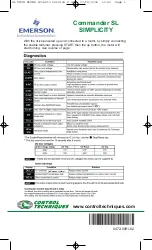
12.8 Counter Function Module
12.8.1 What Is the Counter Function Module?
12-56
Coincidence Detection and Coincidence Interrupts
Coincidence detection and coincidence interrupts are used to output an external output signal
(Coincidence Output signal) and to output an interrupt signal to the CPU when the current
count coincides with the preset value of an output register (Agreed Detection Value (Coinci-
dence Detection Set Value): OL
04).
•
The coincidence detection request (output data/operation data) is enabled when fixed
parameter No. 05 (Coincidence Detection Function Use Selection) is set to Use.
•
The coincidence interrupt request is enabled when fixed parameter No. 06 (Coincidence
Interrupt Function Use Selection) is set to Use.
The time changes that occur after a coincidence detection request is made until the coinci-
dence point is detected and execution of DWG.I (interrupt drawing) starts are illustrated in the
following figure.
*
Time from when the coincidence point is detected until execution of DWG.I (interrupt drawing) starts (approx. 60
μ
s to 440 μs).
Note: 1. DO_00 is used for the coincidence output signal. Therefore, when Use is selected for fixed parameter No.
05 (Coincidence Detection Function Use Selection), DO_00 is masked, and the actual signal output is not
affected even if the register assigned to DO_07 is turned ON or OFF in a ladder program.
2. To monitor output of the coincidence output signal, use the Coincidence Detection Signal in the Operation
Status.
3. To execute a count preset, first clear the coincidence detection request. If you execute a count preset with-
out clearing the coincidence detection request, the coincidence point from before the coordinate type is
reconfigured will be used, which could result in coincidence detection at a position that is different from the
current count.
Coincidence point
T*
DWG.I
IW00C10 Bit5
OW00C10 Bit
3
Coincidence detection
s
etting
0
(-)
(+)
Time (
s
)
Execution
Curr
ent count
















































